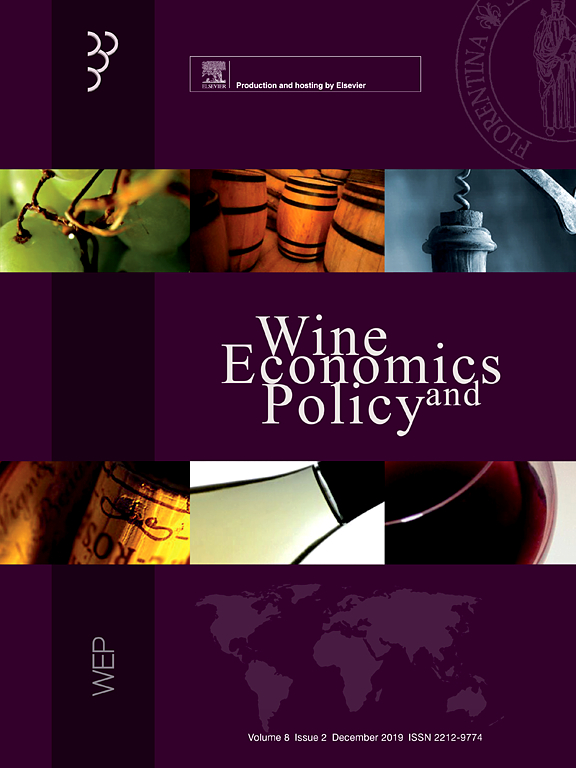How will mandatory nutrition and ingredient labelling affect the wine industry? A quantitative study of producers’ perspectives
Published 2019-05-30
Keywords
- Nutrition labelling,
- Ingredient lists,
- Production costs,
- Competitive advantage,
- Expected consumer reaction
How to Cite
Abstract
PurposeThe purpose of this study is to examine producers' perspectives on the mandatory labelling of nutrition and ingredient information for wine, as suggested by the European Commission. Producers’ expectations about consumer reactions to new label information, the consequences of mandatory labelling on production processes and relative competitive advantages for different producer sizes are assessed.
MethodologyData for this survey was collected from producers using the quantitative research method of an online survey. In total, 483 German wine producers, covering a substantial share of the country's wine acreage, took part in the survey, comprising 434 estate wineries, 29 cooperatives and 20 large bottling wineries.
FindingsThe study concludes that mandatory nutrition labelling will have several effects on the wine industry. Producers' expectations of consumer reactions largely agree with the findings of recent qualitative studies focusing on wine consumers. While nutritional information is unlikely to have an effect on consumer demand, the listing of ingredients is likely to create consumer confusion and uncertainty, weakening wine's image as a natural product. This creates the opportunity for some wineries to focus on clean labelling strategies by completely avoiding additives that require labelling. From a production point of view, mandatory nutrition labelling is likely to increase costs due to changes in oenological practices, the increased need for laboratory analyses and more challenging labelling processes. Large wineries are better informed, and likely to be better equipped, to react to labelling changes.
Practical implicationsThe degree to which negative effects will be realised will not only depend on legal decisions about the classification of additives versus processing aids, but also on producers' willingness and ability to adapt to the changes mandatory nutrition labelling will impose on the industry. Producers should react proactively and anticipate consumers’ requests for fair and transparent ingredient labelling.

